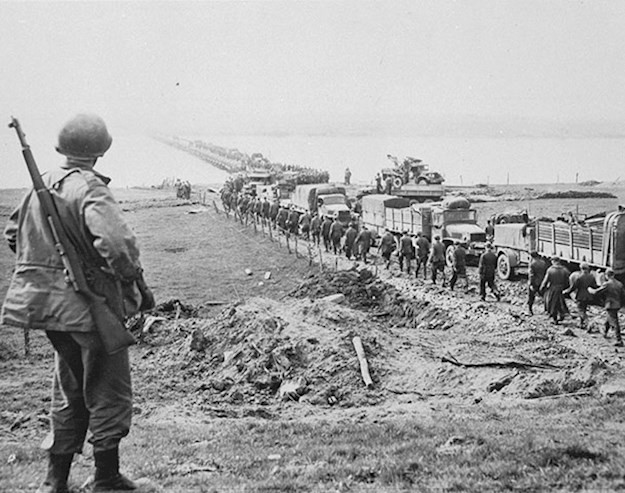Veritable to Varsity
To put an end to the war, Field Marshal Montgomery planned the Rhineland Offensive, a huge operation that was meant to conquer the area west of the Rhine and subsequently to cross the river itself. The offensive was preceded by one of the largest build-ups of Allied forces during the Second World War. In the beginning of February 1945, 500.000 Allied soldiers were assembled in the area around Groesbeek and Nijmegen in the Netherlands, together with 1.000 canon and 34.000 vehicles. It was the largest offensive ever initiated from Dutch soil and the largest operation in the Northwestern part of Europe.
The Allies greatly outnumbered the German forces, but the German military had the advantage of unpredictable terrain and bad weather conditions. In the evening of 23 March Operation Plunder was set in motion: the crossing of the Rhine with amphibious armoured vehicles and improvised floating tanks of the Allied forces. At 07:00 the next morning Operation Varsity, the last major airborne offensive of the war began.
Two divisions of paratroopers were dropped behind German lines, east of the Rhine near Wesel in support of the crossing. After crossing the Rhine, Allied tank divisions reigned supreme on the wide open plains of Northern Germany. The German army had lost its ability to wage an effective defence.
